Toxic and Irritant Garden plants
Concerns are frequently raised relating to the composting of toxic and irritant plants and the wood chip etc. from poisonous trees.
It is true that a small of number of common garden plants are sufficiently toxic to cause severe poisoning but cases of serious poisoning are very uncommon in the UK.
However, there are a larger number of garden plants that present a hazard, and can result in skin reaction or allergy and if ingested stomach pain. Assuming the composter is not in the habit of eating the plants when cutting back the borders or pruning bushes and shrubs the main risk of contact with irritant material is during shredding material prior to composting. It is best to routinely wear gloves and cover the arms when shredding such plants or to check RHS Gardening Advice or the HTA (Horticultural Trades Association).for information about particular risks presented by particular plants
Of course, some irritant plants are welcomed by the composter both to as a compost activator and as a source of liquid feed. The leaves and stems of the stinging Nettle may be irritating to the touch but they are excellent nitrogen rich "Green”. However, the roots or seeds should not be composted in case they survive and spread the nettles where the compost is used.
Composting Invasive plants may not be advisable
Some weeds may be a danger to animals, or cause problems for agricultural production if left to spread unchecked. In the UK, these include common ragwort, spear thistle, creeping or field thistle, broad-leaved dock, curled dock. While it is not an offence in the UK to have these weeds growing on your land the landowner must prevent these invasive non-native plants from spreading into the wild and causing a nuisance. They must also prevent harmful weeds spreading on to a neighbour’s property by controlling them in the most appropriate way. Allowing contaminated soil or plant material from any waste you transfer to spread into the wild is an offence that could be fined up to £5,000 or a prison sentence of up to 2 years.
It is important to note that the fact that a plant can be composted does not mean that composting would be considered the most appropriate way of dealing with the plant as there could be a risk of seeds etc surviving the composting process and allowing the invasive plant to spread. If you are considering composting one of these plants in the UK, contact the Environment Agency enquiries@environment-agency.gov.uk
Bracken
Bracken contains Ptaquiloside, a carcinogenic chemical is found in both the fern and its spores. It has been shown that the spores can cause cancer in mice and bracken has been linked to bladder and intestinal cancer in cattle and horses as well as a number of diseases in other farm animals. It has also linked to human gastric cancer where people, particularly children, eat dairy products where bracken has formed a significant part of the cows diet.
Please see our page on Composting Bracken
Broad Leaved & Curled Leaf Dock
Curled Leaf Dock
By Olivier Pichard (Own work) [CC BY-SA 3.0 (http://creativecommons.org/licenses/by-sa/3.0)], via Wikimedia Commons
Dock leaves can be composted as can the root but, as with thistles any pieces of the tap root that survive the composting process will sprout new growth so the finished compost should be sieved to remove any remaining pieces of root.
The seeds of both Broad Leaved and Curled Leaf docks remain viable in the soil for years so it is better not to risk adding them to the compost bin.
Himalayan balsam
Himalayan balsam was introduced to the UK in 1839 and is a tall annual reaching, 2-3m (6-10ft) in height. It is now wide spread along riverbanks but it does occur in gardens. It flowers between June and October followed by the production of seedpods.
Small infestations in gardens can be controlled by hand pulling other than when seedpods are visible.
It is recommended that the pulled plants are left dry out on-site to kill the plant before composting. As with the perennial weeds that we dry before composting, I would suggest that they be left thinly spread on a surface such as a solid to ensure that the roots dry and die quickly rather than in heaps on the ground. The dead plants can be hot composted. Again on site.
However, if there is a larger volume of pulled plants, they can be left in heaps to compost covered with a tarpaulin to prevent re-growth.
Giant Hogweed
Giant Hogweed
By Fritz Geller-Grimm (Own work) [CC BY-SA 3.0 (http://creativecommons.org/licenses/by-sa/3.0)], via Wikimedia Commons
The seeds of this aggressive invader can survive in the soil for up to 15 years. It also has poisonous sap, which causes severe blistering and changes to skin pigmentation. The UK authorities warn against composting most non-native plants (https://www.gov.uk/guidance/prevent-the-spread-of-harmful-invasive-and-non-native-plants) because they are usually persistent, they may well survive the composting process and they usually infest areas where the compost is used.
In other countries where the same controls are not in place the leaves and stems of Giant Hogweed and wild parsnip can be composted providing adequate measures are in place to protect those handling the plants. The advice is not to compost the roots or seeds.
When composted the plant breaks down relatively quickly including the furanocoumarins that cause reactions in humans.
Horsetail and Mare`s tail
Horsetail (Equisetum Arvense) is an invasive, deep-rooted perennial weed which has rhizomes that may reach 2m (7ft) below the surface. Mare’s tail is often used as an alternative name but I am told that this should only be applied to the water weed growing not the land plant.
In spring, fertile light brown stems will grow from 200 to 500 mm (10-20in) in height and forming a cone shaped structure at the top of the stems which produce spores. In the summer months it produces green (sterile) fir-like plants up to 600mm (2ft) tall are formed. This seed-free summer foliage can be safely composted.
As with many invasive plants and perennial weeds it is the roots that present the composter with the greatest problems. Cold composting will not kill them it can survive in a cold compost bin for years the rhizomes laying dormant until the bin is emptied and the compost spread on the garden. They can also survive in many “Hot Composting” piles which do not reach and maintain a high enough temperature to prevent small pieces of root regenerating when the compost is spread on the garden. Many risk adverse composter’s choose to send these weeds to the Local Council composting site to be on the safe side.
Digging to remove the roots is difficult and will need to be continued over a number of years which is why many gardeners resort to chemical controls,
Hot composting operating at 40-60C will kill the seeds and turning the heap regularly will help maintain the temperature, If hot composting is to be used I would recommend regular measurement of temperature particularly on Allotment Community Composting sites where horsetail produced by one grower may be carried in the compost to plots cultivated by another.
Hotbin recommend that when using one of their bins “the seeds/bits are only added to the top of a already hot pile, that they are kepted in the hottest region near the top (do not fork in or turn the material in the Hotbin as seeds will fall down to cooler base)”
As with other perennial weeds many recommend that they be drowned by soaking in water until they are turned to a mush, dried out or heated by bagging with grass as a pre-composting treatment.
There are reports that if the tops are cut and soaked the resultant liquid can be used to spray on the grape vines, where silica from the tops forms a waxy coat that protects the fruit from mildew.
The weeds be treated to make it safe to compost. The plants should be mixed with 50:50 with fresh grass clippings and stored in a black plastic bag in a hot sunny position for a month. The resultant soggy mess can then be composted.
I would also recommend that the compost produced is left to mature and then given a final ‘germination test’ to ensure the Horsetail has not survived.
Japanese Knotweed
Japanese Knotweed
By MdE (page at dewiki | page at commons) - own photo, CC BY-SA 3.0 de, https://commons.wikimedia.org/w/index.php?curid=3506559
The underground rhizome of this invasive and aggressive weed will spread up to 7m along the ground and 3m deep. The shoots can force their way through tarmac causing structural damage to roads and houses. It must not be composted.
The 1981 The Wildlife &Countryside Act made it illegal to spread Japanese Knotweed by dumping material or soil and since the 1990 Environmental Protection Act; it has been classed as a “controlled waste” substance and must be disposed of at licensed landfill sites.
Composting a future commercial disposal route?
A recent project at the University of Reading provides initial evidence that commercial compost treatment of Japanese Knotweed may be viable treatment route in the future. This project evaluated the minimum temperature regime that kills Japanese Knotweed. The results showed that temperatures in excess of 50℃ killed rhizome while lower temperatures also inactivated the rhizome if exposed to temperatures over 45 ˚C for 48 h or 40 ˚C for 72 h or 50 ˚C for 4 h with the results differing between different soil and compost mixes.. In practice, many commercial composting operations achieve higher temperatures for longer periods of time. The moisture content may well also be an influencing factor. Further research is needed. This may be a future possible route for the commercial disposal of the plant where temperatures can be monitored and controlled but it is unlikely that it will be approved for home hot composting even where the necessary temperatures are held and recorded as the process would not be subjected to the same degree of control as at commercial composting plants.
Common Ragwort May survive composting
Common Ragwort
By Carl Axel Magnus Lindman - Bilder ur Nordens
Flora no. 20 and en:File:Seneciojacobaea.jpg, Public Domain, https://commons.wikimedia.org/w/index.php?curid=74077
Common Ragwort appears to be less well managed than it once was and I often find it growing on allotment sites. This in itself is not a problem provided it does not spread to areas where might eat the plant when grazing or where their forage is grown.
Composting in the open is not recommended as a means of disposing of Ragwort, as there will be a risk of the ragwort spreading. However on-site composting may be used for small quantities of common ragwort if care is taken to prevent the spread of seeds i.e. it can be rotted down on-site a sealed lidded container i.e. a rigid plastic compost bin..
The 2005 DEFRA advice, now withdrawn, is included here for those outside the UK. It was recommended that the Ragwort should be collected in sacks. If plastic sacks are used, these must be emptied into the compost bin directly. If paper sacks are used, these could be loaded into the compost bin, sliced, and consolidated, to increase the rate of biodegradation. The ragwort should be covered with a layer of grass clippings to help start the biodegradation process and help prevent the material drying out. As drying increases the risk that some seeds or root material may not be destroyed and may lie dormant. Sufficient water should be added to keep the material moist.
There is still a risk of spreading viable material when the compost bin is emptied but these can be reduced by allowing the keeping the material in the original compost bin for up to 12 months to mature. During this period, no fresh material should be added. If there are any concerns as to whether seeds of root have survived in the residues, they should be transported to landfill
The current official advice is that common ragwort may be composted on-site or off-site if the facilities and expertise are available to compost ragwort, or green waste containing ragwort, to the British Standard PAS 100:200512. This will ensure that all material is composted effectively. Where there are any concerns that, this standard cannot be met, i.e. when home composting, then the residues should be disposed to landfill in accordance with Environmental Agency advice. Small amounts can be disposed of using the domestic waste collection service subject to Local Authority approval. The ragwort should be double bagged in plastic sacks for collection, or placing it into a refuse wheelie-bin for collection as domestic refuse, Ragwort should not be mixed with the ‘Green Waste’, unless the Local Authority permits its inclusion.
If home composting is undertaken, outside the UK, despite the risk of spreading the plant, it should be by hot composting in a sealed container. The temperatures reached in hot composting should be enough to destroy viable seed and breakdown the toxic alkaloids contained in ragwort. Ragwort seeds can ripen after being pulled or cut so temperature control when hot composting is vital. The compost should be matured for a minimum of 12 months so that it is completely composted
Further information:
https://www.gov.uk/government/uploads/system/uploads/attachment_data/file/515855/pb11050-ragwort-dispose-110315.pdf
Poison ivy
Poison Ivy
By Famartin (Own work) [CC BY-SA 4.0 (http://creativecommons.org/licenses/by-sa/4.0)], via Wikimedia Commons
Poison Ivy is, as its name implies, a poisonous, flowering plant, shown here in its autumn colours. It is native to North American and Asian. They contain an oily toxic substance, Urushiol, which is causes an itching, allergic and sometimes painful rash. Contact can result in anaphylaxis.
Handling dead leaves or vines can also be hazardous as the Urushiol oil can remain active for several years,
Poison Ivy, and its relatives, should not be composted, as the poison present in the fruit, leaves and stems of the plant is very slow to decompose. Not only can it survive in the composting organic material but can coat the walls of the bin and aeration tools
Thistles Composting Spear and Creeping Thistle
Spear Thistle
By AnemoneProjectors (Spear Thistle (Cirsium vulgare) Uploaded by pauk) [CC BY-SA 2.0 (http://creativecommons.org/licenses/by-sa/2.0)], via Wikimedia Commons
The British thistles include two listed invasive plants. The Spear Thistle and the Creeping thistle. These plants can be composted but there is a potential problem. In the case of the Spear thistle, the leaves turn harder with age and if wishing to compost them it is better to do so when they are younger before the spines harden. Once they have become hard they will take a long time to compost and may have to be returned to the bin when the rest of the contents are harvested or alternatively they can be composted separately in the “slow” bin.
Sieving the final compost is recommended to remove any pieces of root material that has survived the composting process particularly in the case of the creeping thistle
Walnut leaves
The leaves of walnuts the, Black walnut (Juglans nigra), other walnuts (Juglans spp.), and the hickories (Carya spp.) produce a growth inhibitor (Juglone) which restricts the growth of other plants. If the inhibitor survived the composting process, it would rather defeat the purpose of making compost by producing a product that would not grow plants. Juglone produced by the walnut restricts competition by inhibiting the growth of other plants in the ground surrounding the tree .As the juglone is decomposed during the composting process the leaves from these can be composted Walnut leaves can be composted because the juglone toxin breaks down when exposed to air, water and bacteria. The toxic effect of the juglone being degraded in two to four weeks. Long before the composting process has been completed.
As with many leaves, it is better to shred or chop them before composting to expose a large surface area. If they are not to be bagged for leaf mould, the leaves can be layered into a normal compost heap. They are a Brown and are high in carbon so will need a plentiful supply of nitrogen rich Greens to compost effectively e.g. such as kitchen scraps or grass clippings. The moisture content is important so water regularly particularly when aerating. As with other toxic plants, it is recommended to leave the compost to mature.
Composting Toxic Shrubs Cherry and Portugal Laurel
Prunus laurocerasus fruits.
By VoDeTan2 - Own work, CC BY-SA 3.0, https://commons.wikimedia.org/w/index.php?curid=9699645
The leaves of these shrubs can release cyanide when damaged e.g cut and/or shredded as they contain cyanogenic glycosides
In reality the danger to composters is relatively small and the most exciting recent cases being limited to people being aware of the characteristic “cyanide” smell of almonds. However it would be sensible to take simple precautions such as pruning or shredding these plants on a windy day while standing up-wind. If shredding under cover ensure that there is adequate ventilation If taking prunings to the recycling site use an open trailer or leave them for several days to dry out.
Laurel can be home composted but as they will take a long time to compost even when shredded it may be preferable to compost them in a separate bin. Information on a large number of poisonous plants can be found at http://www.thepoisongarden.co.uk/atoz.htm
Rhododendron
Rhododendron is commonly found in UK gardens and also growing wild in the countryside. When eaten by cattle, sheep or goats and it can cause vomiting, abdominal pain or sudden death.
Research has shown that the toxic substance in Rhododendron, grayanotoxin, completely degrades during a composting compliant with PAS100 .
Rhododendrons leaves, and many other evergreens, are very slow to decompose in a compost bin and are best shredded composted in a separate slow compost bin.
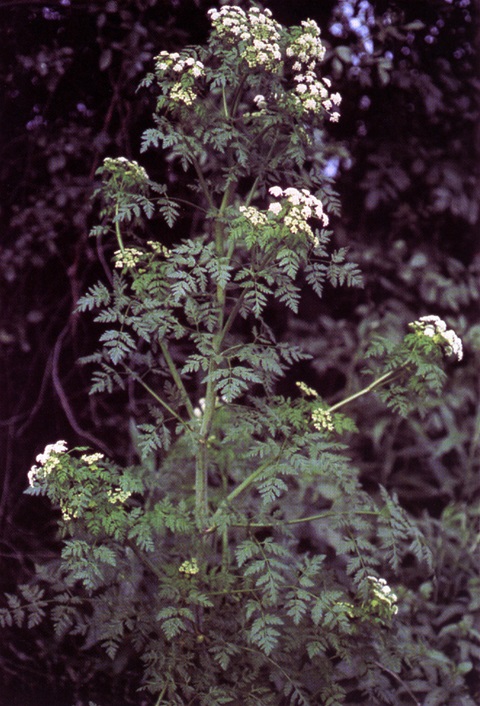
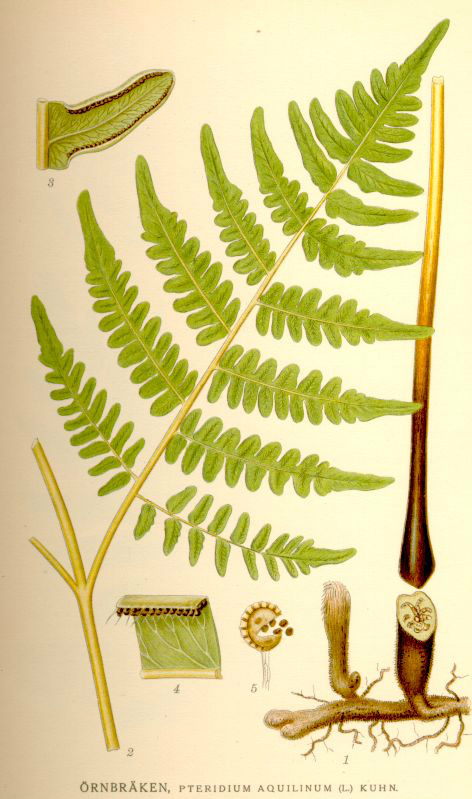
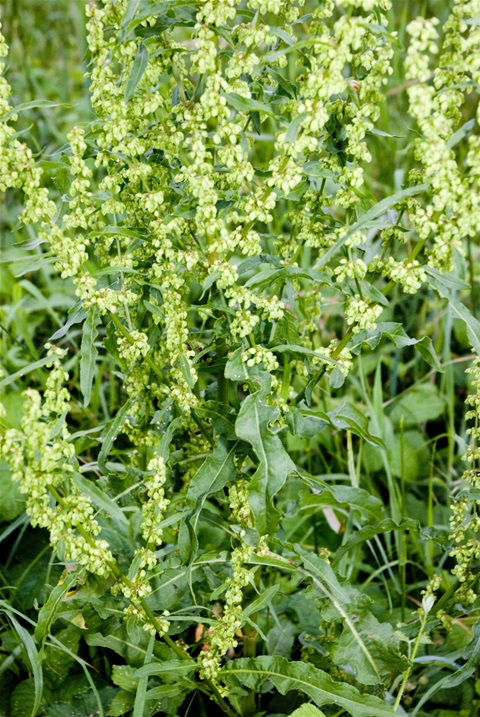
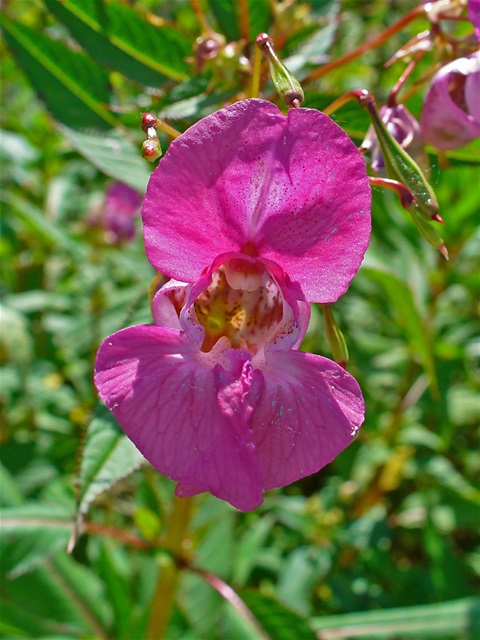
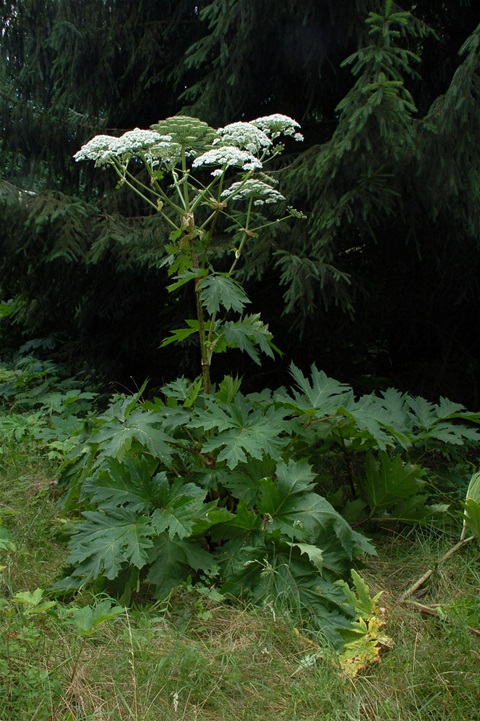
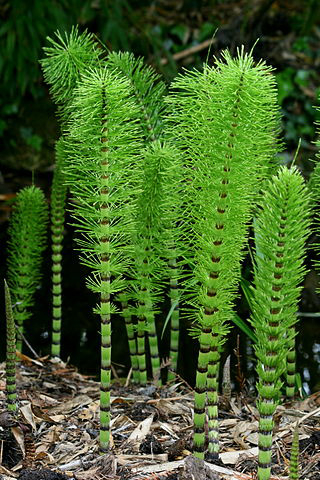
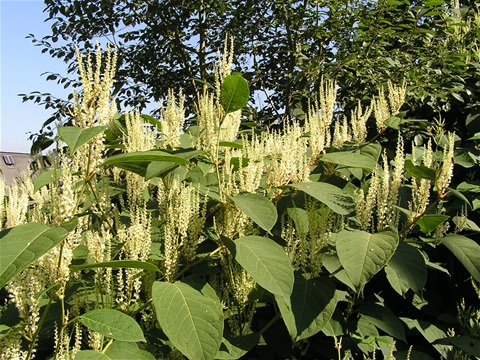
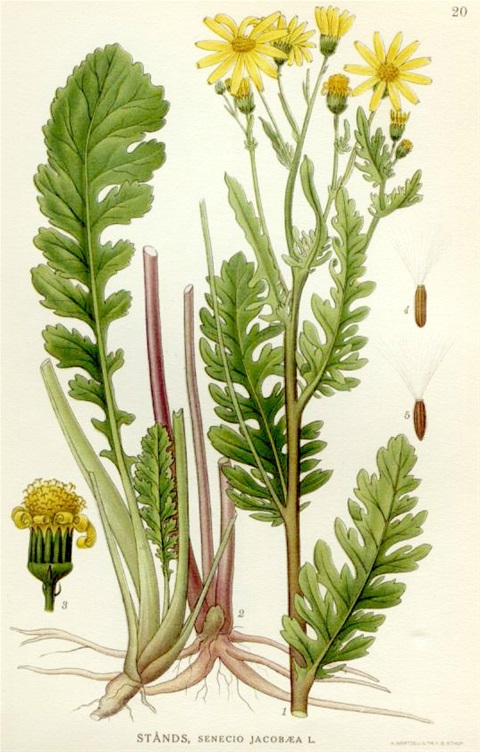
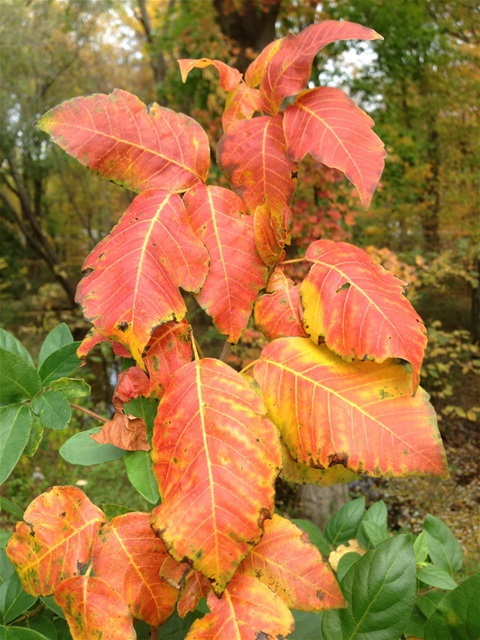
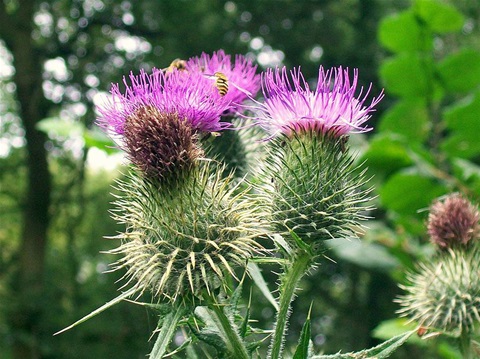
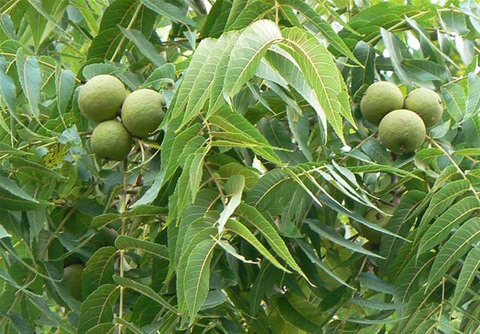
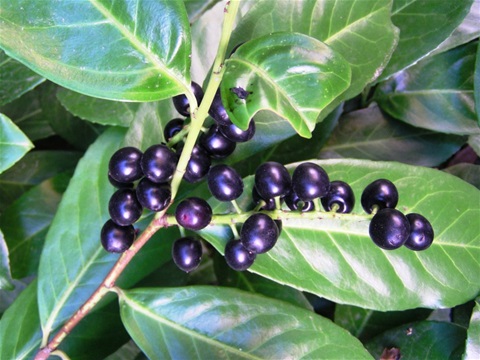
Dik Cook
You dont mention holly as a toxic plant. Is it okay to compost it?
Amanda Leonard
Hello, will support compost on a home heap? Or should I kill it first? Thankyou. Amanda.
Anne terrell
we have a Rocket composter purchased from the UK . will we be able to safely pasteurise ragwort in it ?
Lesley Greene
Apologies Rod
Just found the advice re pernicious weeds not necessary to burn - confirms what I thought!Thanks!
Patricia
Thanks for replying Rod.
Patricia
Thanks for your Rodney, however it is edible fig tree prunings and branches that I am asking about.
Patricia
Are fig prunings and branches poisonous for other plants? I want to shred/chip them as mulch for new trees to conserve water. In southern Spain, very Hot location.
Rod
Hi
The advice I have found from several sources is that it is fine to compost fig.
Rodney Weston
I have no experience of these but know creeping fig( ficus pumila) is mildly poisonous but it breaks down during composting. The advice I have found is that it is fine to compost fig.
Dianne
Hi could you possibly tell me what Figure 5 is in the Bracken picture? I've found some seeds whose origin I'm not sure of and they look just like the little round things.
Thanks so much for your help